Birding in Suriname - Join me on my weekly journey to spot as many birds as possible
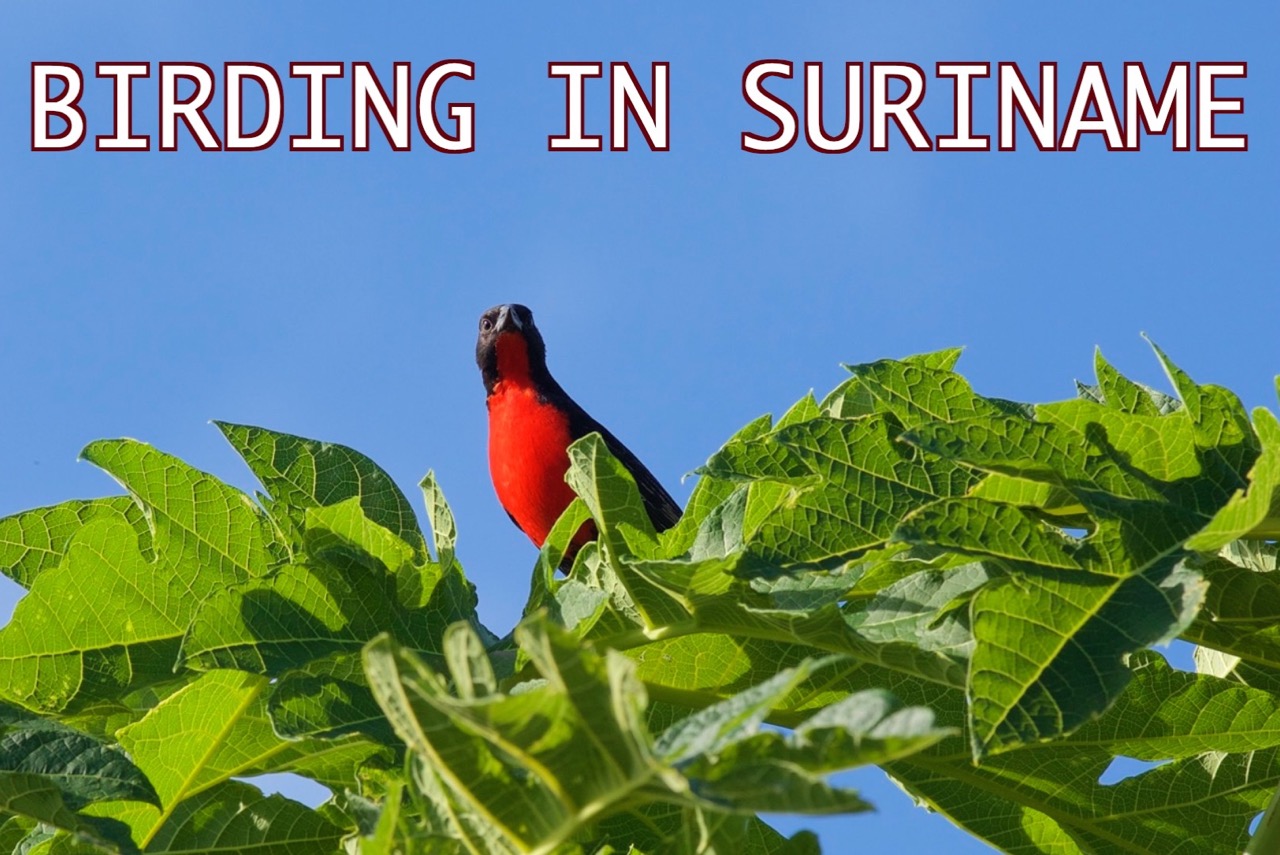
The bird you see in this image is a Red-chested meadowlark. It's sitting on a Papaya tree watching over its young. I took this picture near my house in Suriname. Where lies Suriname, you might ask? Suriname is small country north of Brazil. It's one of the former Guyanas.
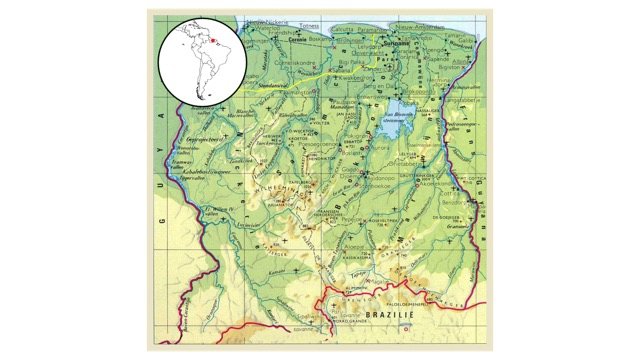
Around 500.000 people live in Suriname, most of them in and around Paramaribo, the capital city of the country.
It was after watching the movie 'The Big Year' that I felt inspired to do some birding myself. For birders, a 'Big Year' is trying to spot as many birds in one year as possible.
Off course, I have photographed some birds before but I've never really tried to identify them all. So last week I went out and tried to spot and shoot as many birds as possible. The main character from the movie spotted 740 birds or so at the end of the year. I've spotted 28 this week. Combined with older photos and videos, I've spotted 35 birds and identified 30.
I like to share my birding adventures here on Steemit. For now, my main focus will be the area around Paramaribo where we live.
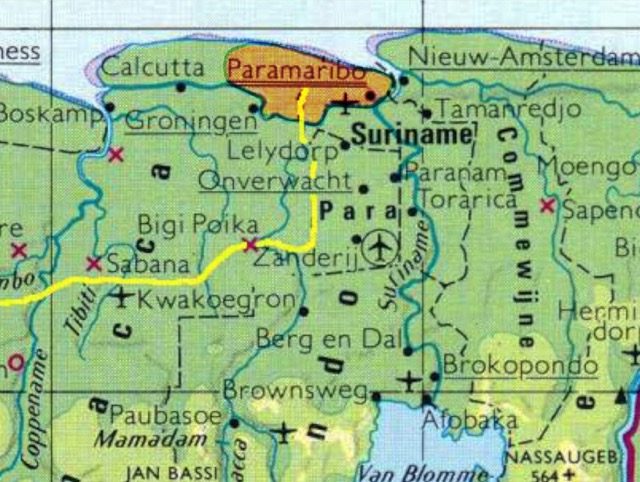
Most of this area is wetlands with canals, rivers, fields, forests and mangrove. The next picture gives you an idea how this part of the country looks like.
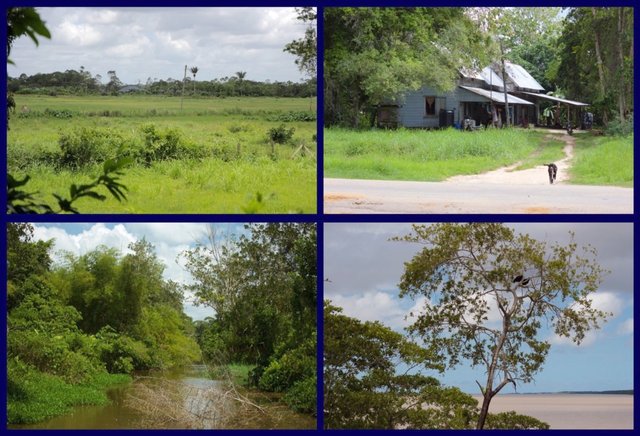
Suriname is one of the most bio-divers countries in the world. According to Wikipedia there are 728 species of birds living in this country. So I've got some serious spotting to do.
This is a list of the birds that I spotted and identified so far. Every week I'm going to share a couple of them.
- Red-breasted Meadowlark (Sturnella militaris)
- Great Kiskadee (Pitangus sulphuratus)
- Ruddy ground dove (Columbina talpacoti)
- Snail kite (Rostrhamus sociabilis)
- House wren (Troglodytes aedon)
- Greater yellow-headed vulture (Cathartes melambrotus)
- Striated Heron (Butorides striata striata)
- Snowy egret (Egretta thula)
- Tricolored Heron (Egretta tricolor ruficollis)
- Cattle egret (Bubulcus ibis)
- Scarlet ibis (Eudocimus ruber)
- Blue-black grassquit (Volatinia jacarina)
- White winged Swallow (Tachycineta albiventer)
- White-headed marsh tyrant (Arundinicola leucocephala)
- Golden-winged parakeet (Brotogeris chrysoptera)
- Yellow Oriole (Icterus nigrogularis)
- Tropical Mockingbird (Mimus gilvus)
- Blue-grey Tanager (Tangara episcopus)
- Glittering-throated emerald (Amazilia fimbriata)
- The Wattled Jacana (Jacana jacana)
- Tropical Kingbird (Tyrannus Melancholicus)
- Wing-barred Seedeater (Sporophila Americana)
- Pied Water-tyrant (Fluvicola pica)
- Variegated Flycatcher (Empidonomus varius)
- Green-throated Mango (Anthracothorax viridigula)
- Green Kingfisher (Chloroceryle americana)
- Palm Tanager (Thraupis palmarum)
- Green-rumped Parrotlet (Forpus passerinus)
- Rufous Casiornis (Casiornis rufus)?
- Yellow Warbler (Setophaga petechia)

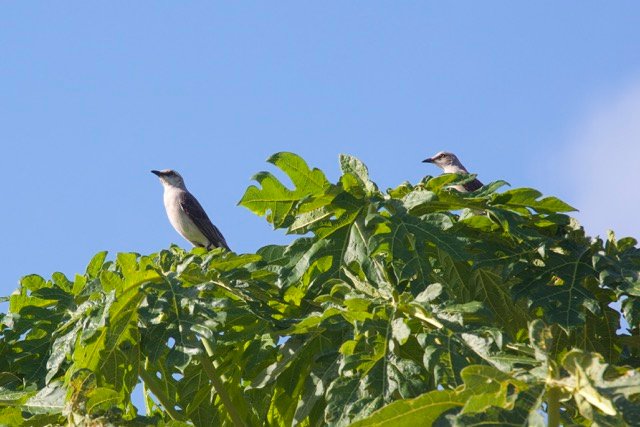
This bird is common and welcome guest in our garden. The male and female look alike and although maybe not the prettiest bird it sure can sing. This bird has the most beautiful and colourful song I've heard so far. It eats insects but also likes the berries of the butterfly bush.
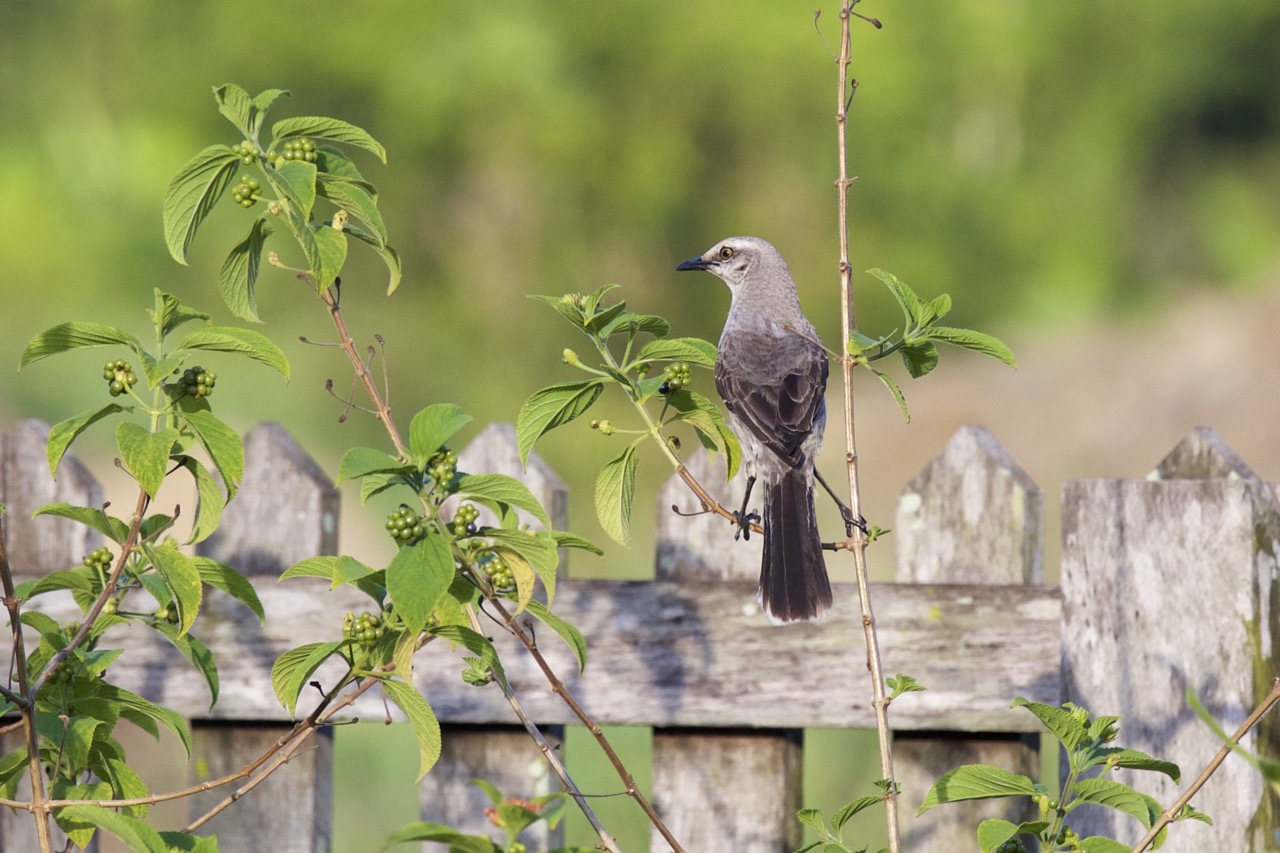
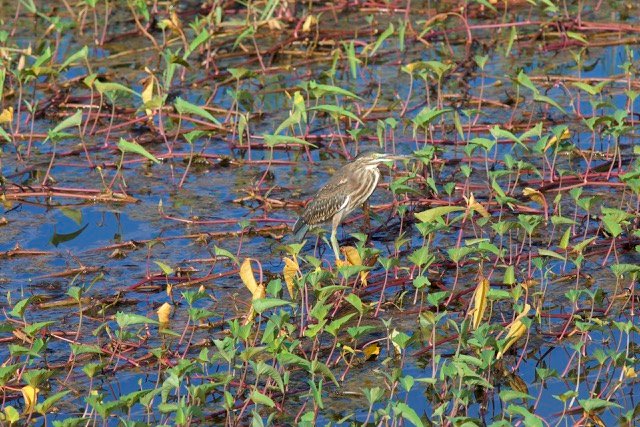
This small heron is shy and will fly away when you try to approach it, usually uttering a raw call. It often sits in solitary on the banks of the canals waiting for a little fish to be caught with its long and sturdy bill. This heron is the most common heron of Suriname.
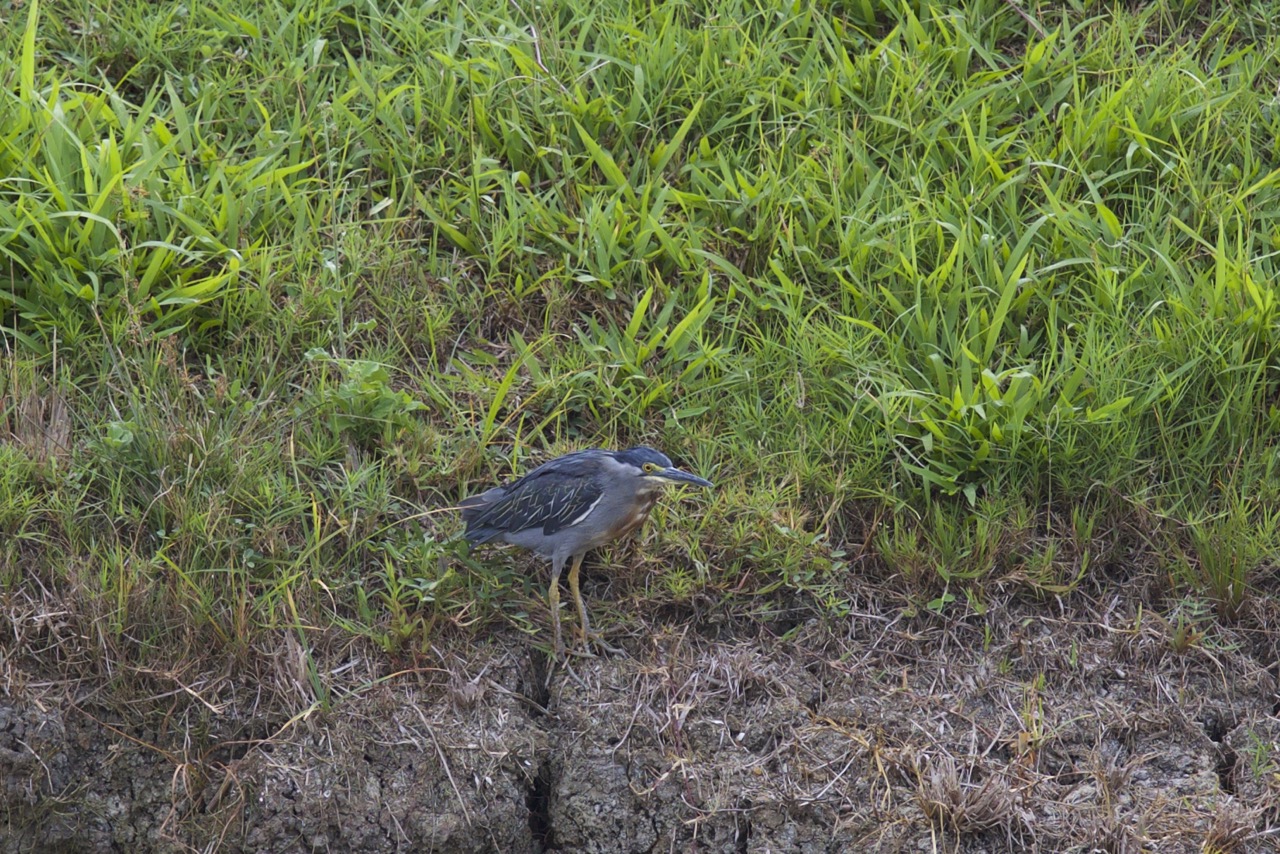
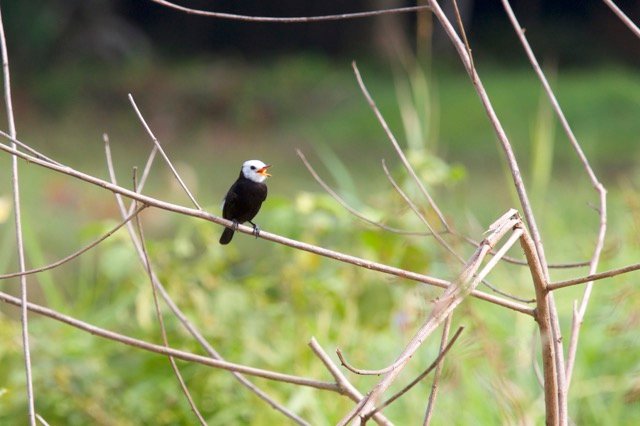
This Tyrant Flycatcher is a real marsh bird. It's usually perched on a branch near the water where it will catch flying insects. The male is black, brown with a large white head. The female is much lighter brown and white.
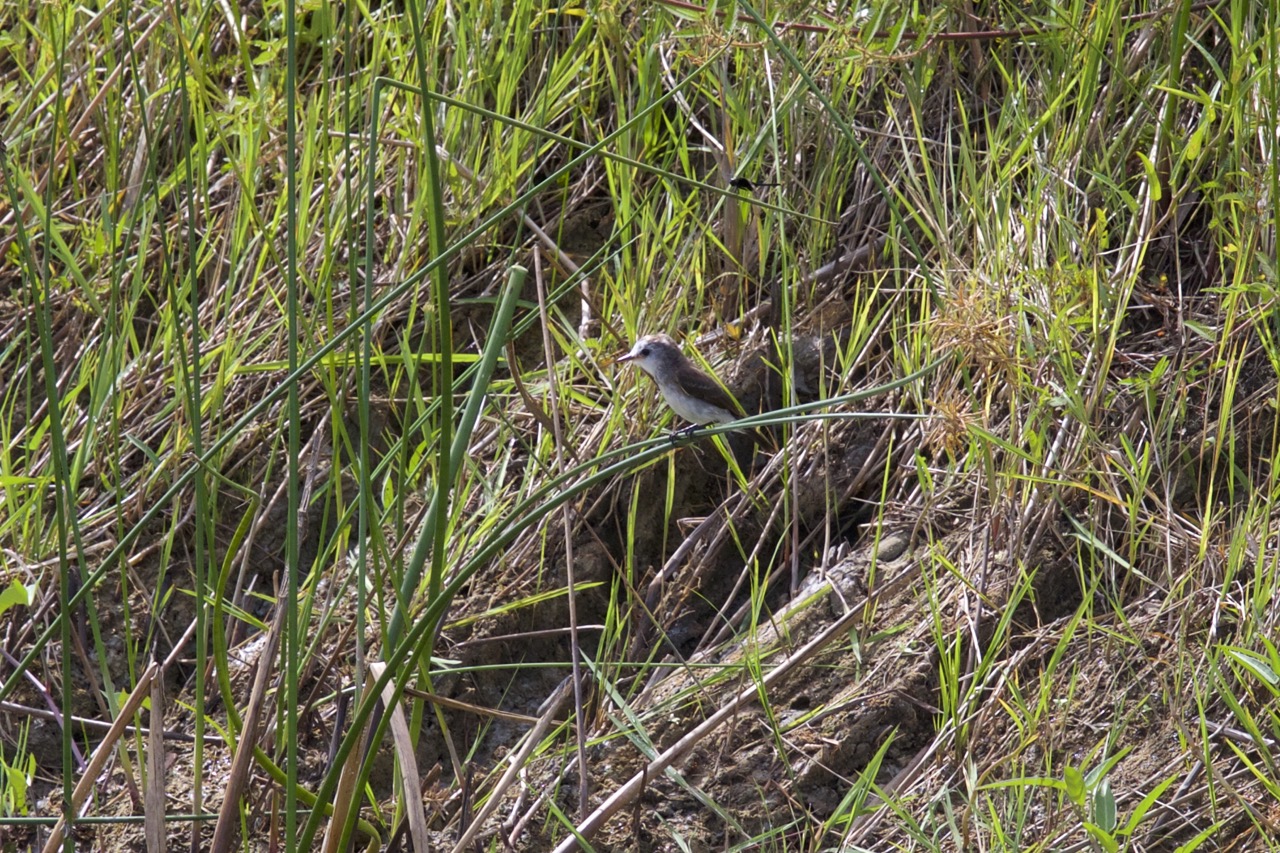
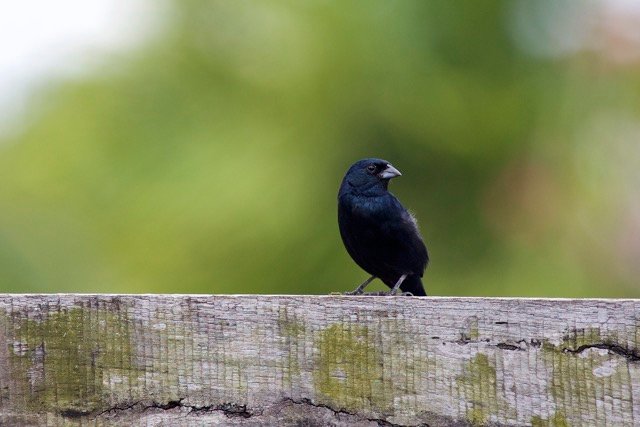
This small bird in the Tanager family has an interesting jumping display. It's the only bird who does this. It's not clear why it does this. Sitting on a branch or fence, it jumps up and down at regular intervals always combined with a short 'shee' sound.
It feeds mainly on seeds. The female is brown but I have not photographed her yet.
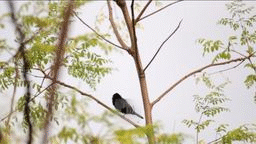
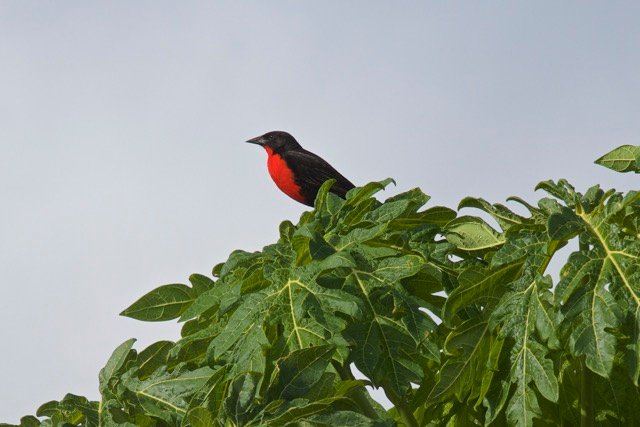
This beautiful bird has an interesting way of protecting its young. When a potential threat approaches (me and my dogs), it warns its young who will dive away in the field. The male adult will fly up and distract the threat from its young by displaying himself, up in a small tree or bush. The female is brown, I have not photographed her yet. They mainly feed on insects and some seeds.
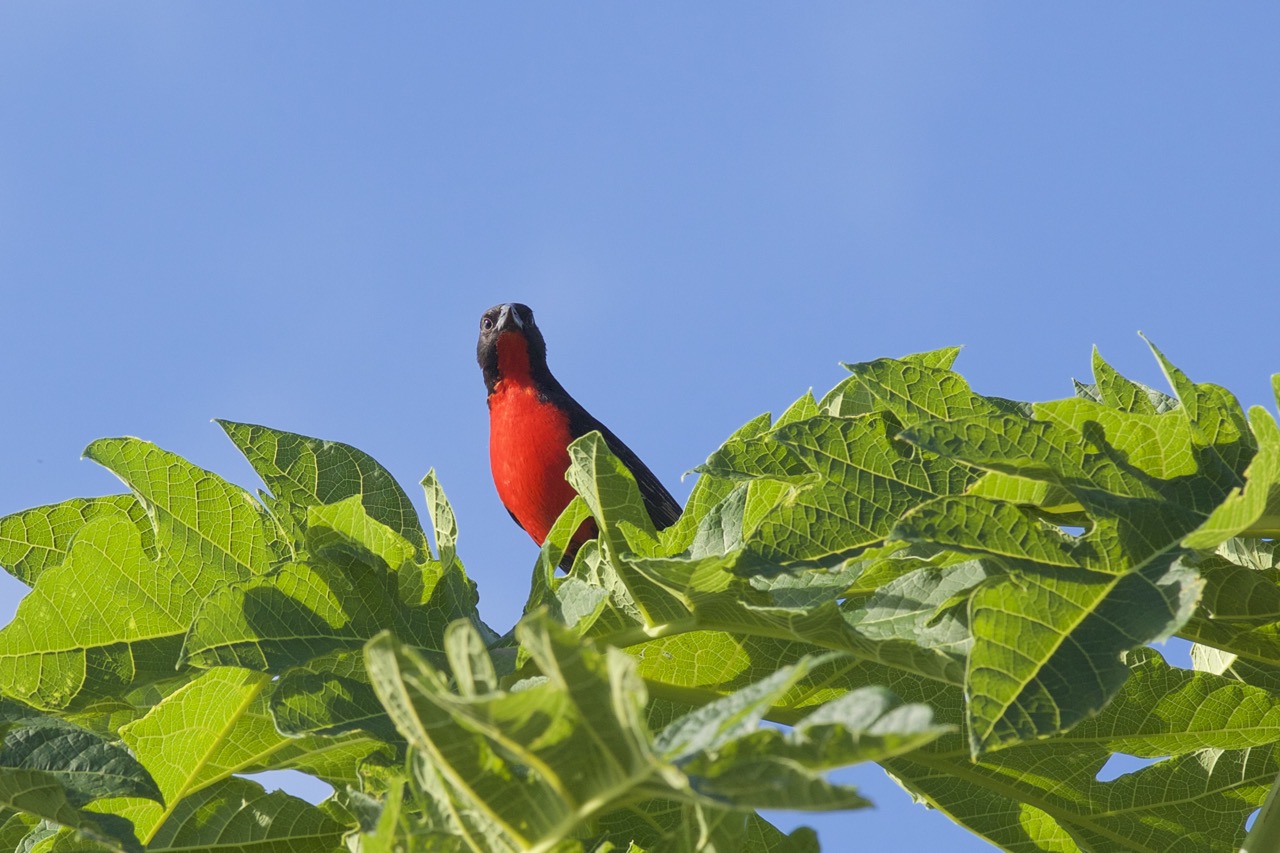
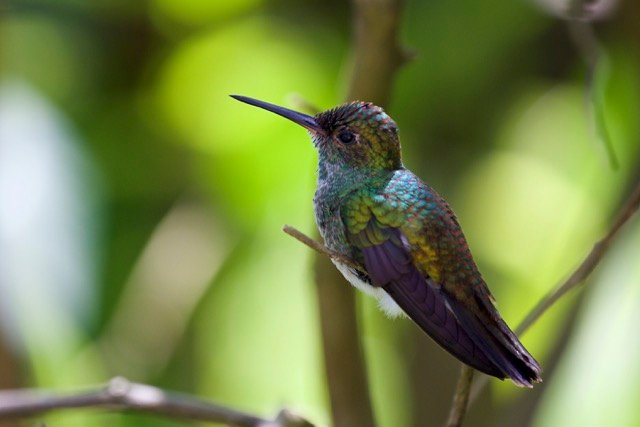
I've finally identified this beautiful little hummingbird. There are over 400 species of hummingbirds and a lot of them look very much alike. It's a regular guest in our garden feeding from the nectar in the flowers. They are ever so small, probably not much longer than 6/7cm. Here we have the whole family together.
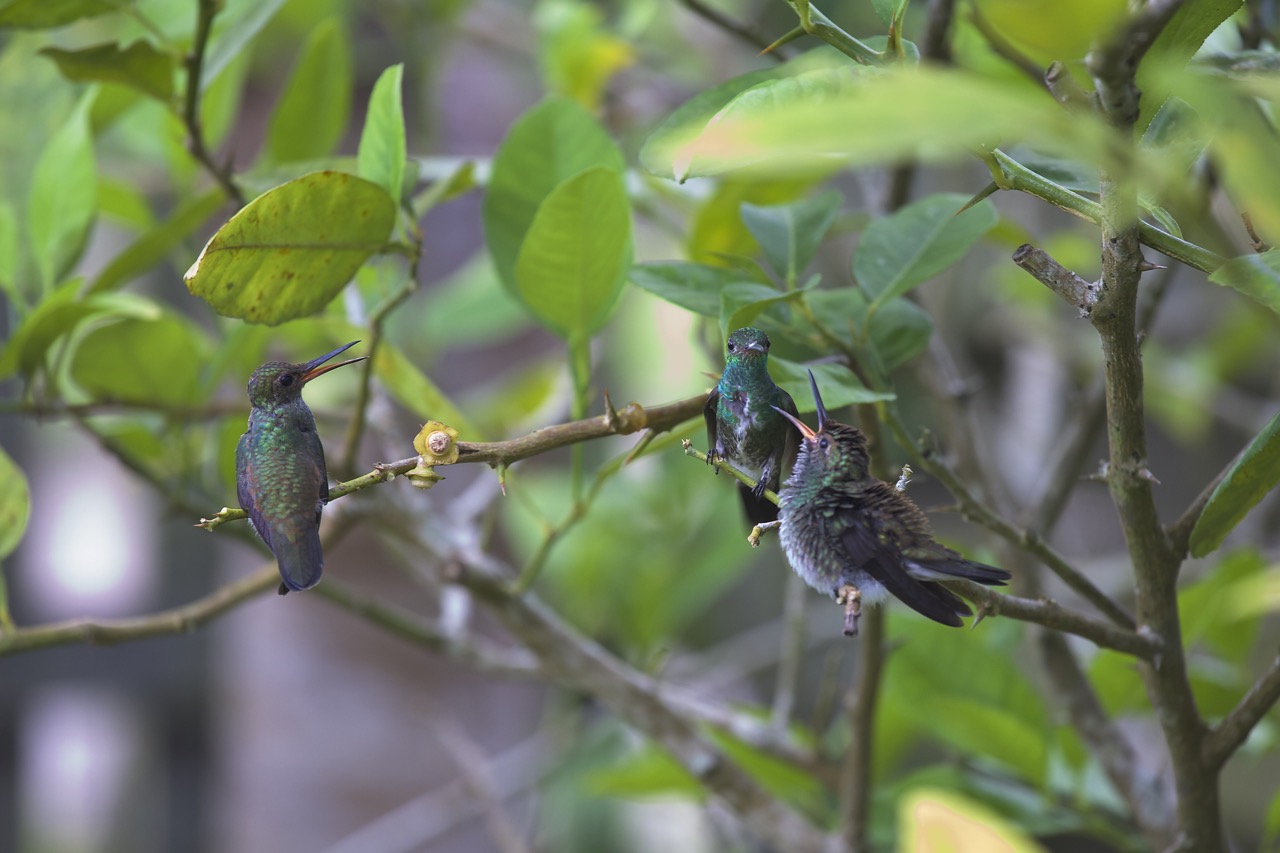
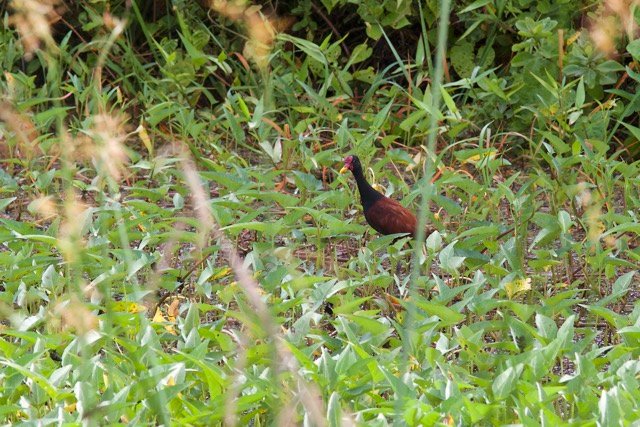 !
!This wader is a typical wetland bird. With its large feed it can walk over the vegetation on the canals. They are very shy and immediately fly off when you try to approach them. The young are much lighter coloured. You can see it on the right.
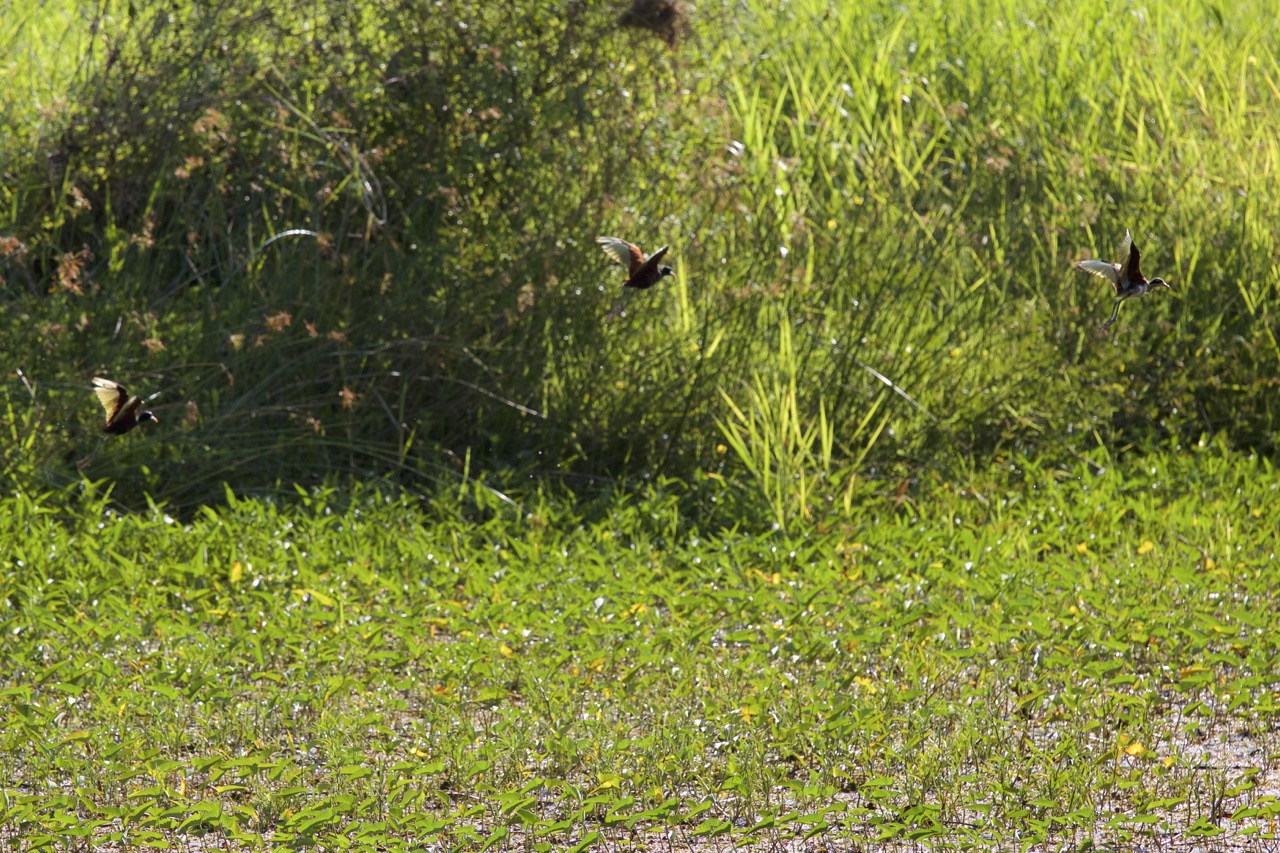

I hope you enjoyed these birds with me. Stay tuned if you want to see more birds from Suriname.
Much love,
GBS

So many amazing pictures @gardenbsquared, so much dedication and work in this post again. My biggest discovery in this post was - ahum - the location of Surinamie, i thought it was somewhere around Indonesia, ahum :-)
Thank you. I have to use busy.org now to reply. Most people don't know where Suriname is. I would not be able to point out Goa on the map ;-)
Wonderful GBS! I am thrilled that you are so interested in Birding, and your photography is amazing as well!
I will be sharing this article with my wife, @ecoinstante. She recently shared an article about some of our avian friends on the farm, she is also learning how to make articles from her experiences, I think we can learn a lot from your article here ;p
Love and Light!
Very interesting post from @ecoinstante. My Spanish is a bit rusty though. I hope to see these exotic birds as well. I spotted one woodpecker the other day who looks quite similar. It was a Campephilus melanoleucos.
Hey I will ask you since I have heard different answers, do you think she should include english translation paragraph by paragraph? I see a lot of spanish writers including google translate paragraphs
What do you think GBS?
Personally I would not mind since I don't speak Spanish and can only understand a little. But I would do what's most appreciated.
I appreciate you! Keep up the birding - you have the 'eye of the tiger'!
I think that is appropriate, if the way my brother's cat looks at birds is any indication.
epic bird adventure indeed! nice job in identifying each one... so you've been doing this for 6 years now?
This gem of a post was discovered by the OCD Team!
Reply to this comment if you accept, and are willing to let us promote your gem of a post! By accepting this, you have a chance to receive extra rewards and one of your photos in this article will be used on our compilation post!
You can follow @ocd – learn more about the project and see other Gems! We strive for transparency.
If you would like your posts to be resteemed by @ocd to reach a bigger audience, use the tag #ocd-resteem. You can read about it here.
Thanks you. I've been watching them for many years but only recently tried to identify them. Thank you @ocd. I gladly accept.
You're certainly doing a great job :)
Oh that family of Amazilia is an incredible shot!
Thanks. It's from a couple of months ago. But they are here every day. It was a totally over exposed shot but one of those little treasures one keeps.
The photos are amazing!! Now I am not only discovering new birds across Vietnam but also in Suriname (as well where it is located). I thank you @gardenbsquared for living with such a passion and sharing it with us! As well as educating%) Much love!
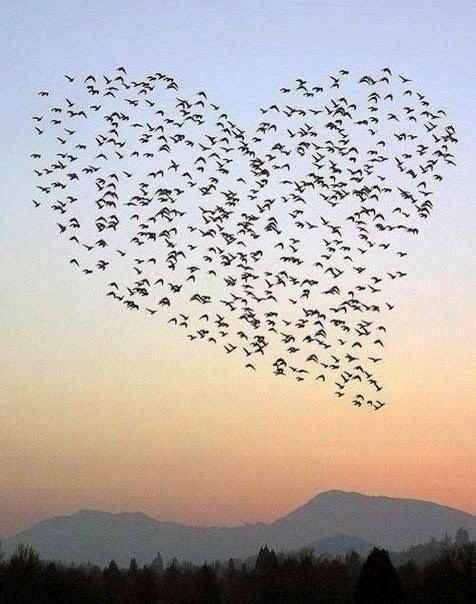
Image Source
Thank you. That's so nice. I'm glad that you like it. Next Sunday there will be more birds to share. A big hug from Suriname.
Beautiful photos. The grassquit is quite striking.
Thanks. I'm glad you appreciated the photos. The grassquit is indeed a very interesting bird.
The photoes are amazing!!